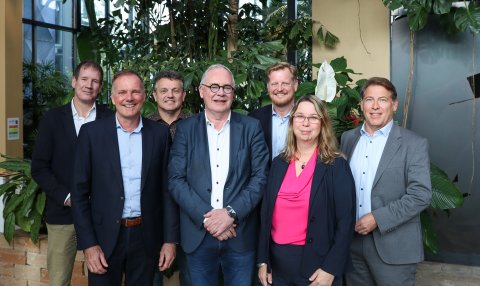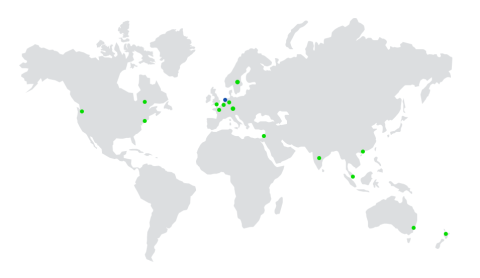
With approximately 14 billion IoT devices connected to the internet, Internet of Things (IoT) has proven to be a powerful and widely adopted technology.
The secret of IoT is out – and has moved beyond just high-tech circles and hype cycle followers. IoT now has a firm place on the agendas of IT departments as well as real estate and facility managers aiming to deliver smarter, and more engaging buildings. If IoT is something you and your teams have been researching, then we hope you’ll find some helpful takeaways in this blog around selecting IoT for smart buildings.
Business happens in real time
In today’s corporate world, you can collect large volumes of real-time data around space occupancy, asset behaviour, or energy consumption. This data is captured from a variety of sources including sensors, energy meters and building management systems.
An IoT platform enables you to connect these data sources, standardise the incoming data, and even integrate the data at the business application level. This provides you with better visibility into your building performance and enables data-driven facility services such as activity-based cleaning.
What are the leading IoT use cases?
Technology initiatives often originate on the business side and should be driven by business (growth) objectives. This is also how budget priorities are derived. Research from Verdantix shows that leading IoT use cases including space utilization monitoring and tracking energy consumption, most commonly reflect an organization’s strategic business objectives. Top priorities in the built environment include:
- building optimization for cost efficiency
- portfolio decarbonization for improved sustainability performance
- experience and wellbeing to keep employees and occupants happy, healthy and productive
Where to start to make the right investment?
If you’ve been researching IoT and IoT platforms, you may be asking some of the following questions. Is investing in IoT the right choice? What are the key considerations to take into account? Which vendors can meet the requirements? Selecting the IoT solution that best fits your organization may be challenging. There are numerous factors to consider from both a business and IT perspective. Moreover, there are hundreds of vendors active in the building IoT market.
This is where research from independent market analysts can then be helpful. The Verdantix Buyer’s Guide on Smart Building IoT Platforms is a great starting point when searching for an enterprise-scale IoT solution. This recently published guide contains key IoT trends, lists selection criteria, and provides an up-to-date analysis of 40 prominent vendors offering IoT solutions.
3 key takeaways from a business perspective
As strategic objectives, the level of digital maturity, and budgets differ per organization, there is no single ‘best’ route to recommend. But there are some factors that can help you choose the right direction for your organization. For instance, among the top selection criteria, you typically find scalability (scale up in connected endpoints) and usability (user-friendliness of the interface). In addition to these two criteria, I believe the following are three factors every organization should assess when selecting an IoT platform.
- Fit for purpose – Before diving into the sea of software capabilities, think about what strategic objectives you want to support with IoT. What do you want to measure for what goal? What cross-department collaboration is required?
- Time-to-value – How quickly can you get up and running with the solution? Does your organization have time to test small and scale up when success is determined? Are investments in the tech stack needed or is it a matter of out-of-the box deployment?
- Value-for-money – Once your IoT project is implemented and you are collecting data and connecting your data sources, how will you turn that into day-to-day business value that you can communicate to your leadership teams? Organizations often get stuck showing and communicating value at only the business application level. However, leveraging IoT data translates to increased efficiency for facility management professionals, because it leads to easier access to real-time, actionable insights to help the organization save money and resources.
If you are aiming for smarter and more engaging buildings, it makes sense to consider investments in IoT. After all, as day-to-day business increasingly relies on making better decisions based on real-time data, the potential of incorporating IoT into your real estate and facility processes is huge. Using an independent buyer’s guide can support you in choosing the best-fit IoT platform for smart buildings.





















